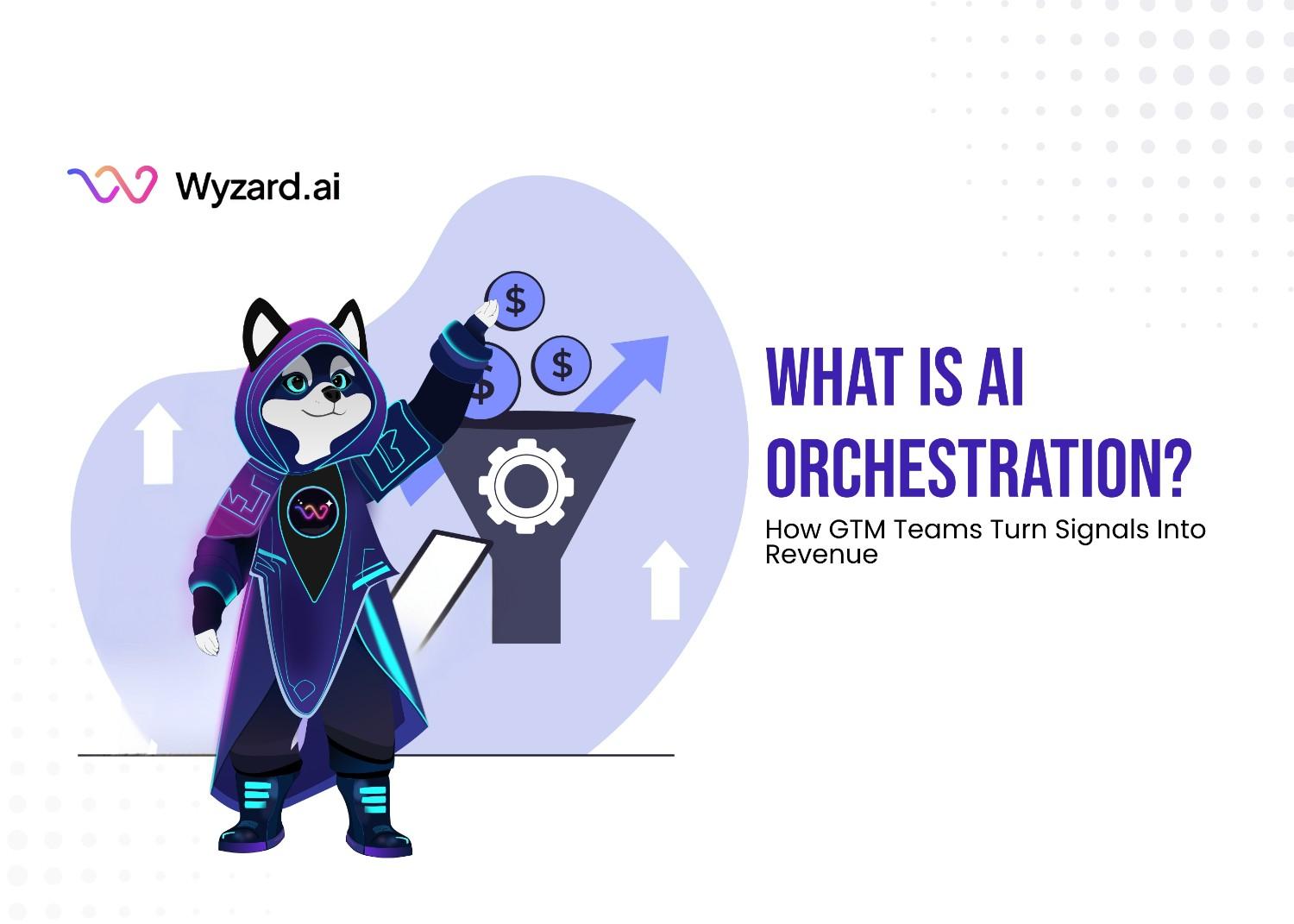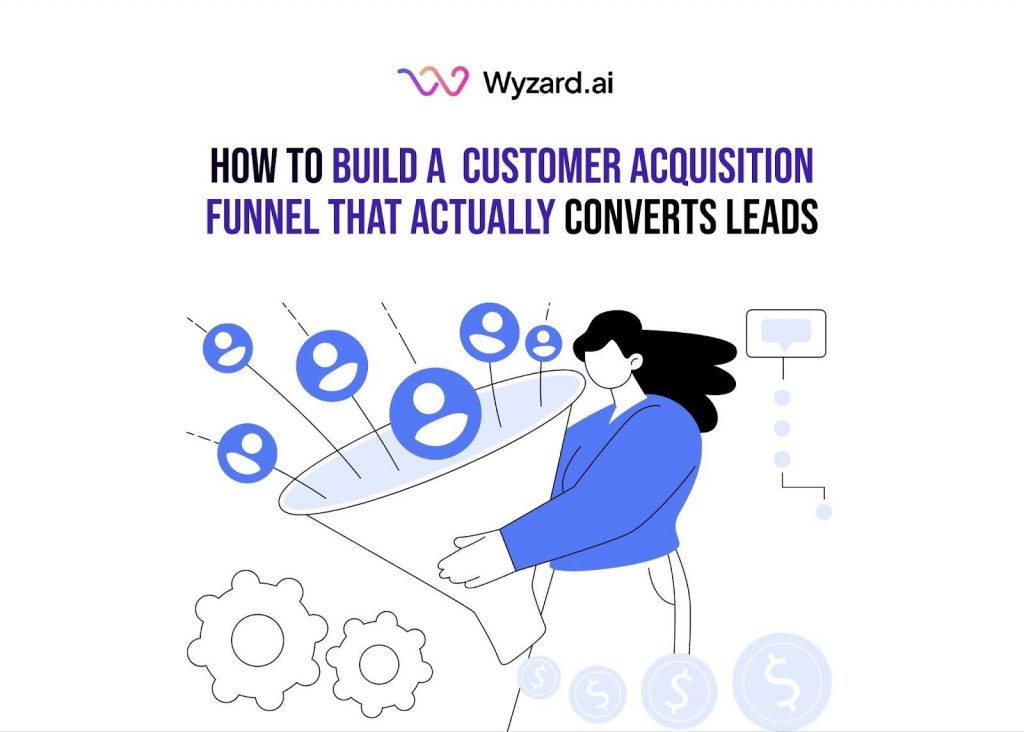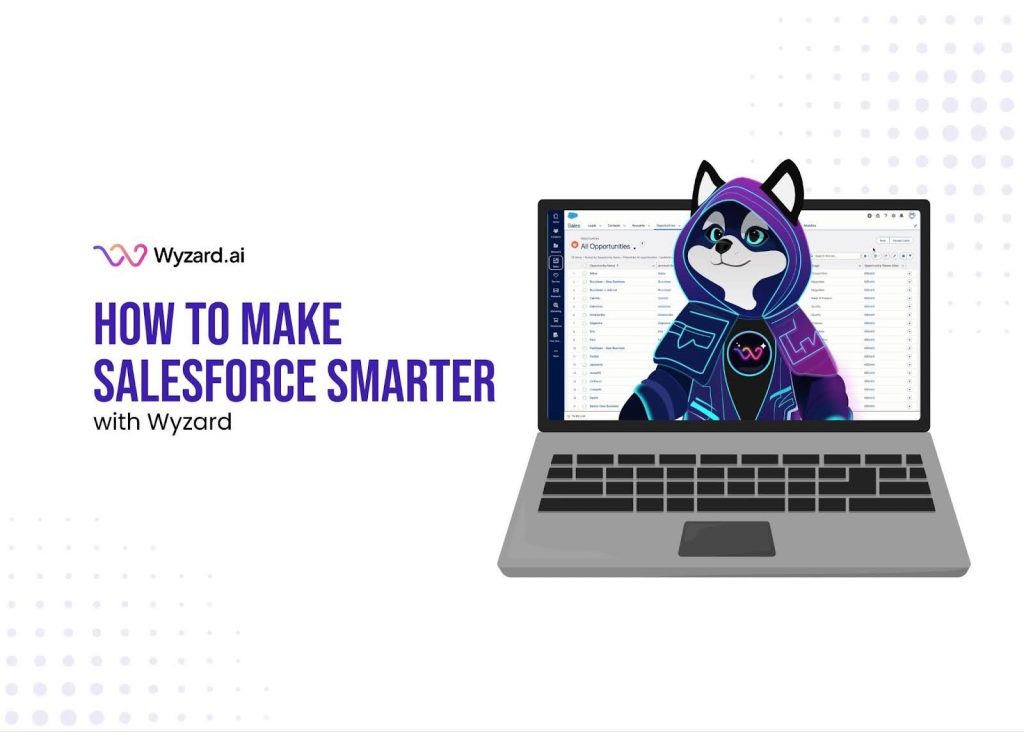You're generating traffic. Leads are visiting your website. But conversions? They're barely moving the needle. The problem isn't your ...
What is AI Orchestration? How GTM Teams Turn Signals Into Revenue


Subscribe Now
Your marketing team just spent hours manually routing a hot lead through Slack, updating your CRM, and sending follow-up emails. By the time someone responds, that prospect has already moved on to a competitor. Sound familiar?
This isn’t a people problem, it’s a signal problem. Every day, buying signals scatter across your tools: a form fill here, a pricing page visit there, an email reply buried in someone’s inbox. The gap between signal and action is where revenue dies. This is exactly where AI orchestration comes in, and why understanding how to orchestrate AI agents has become critical for GTM teams looking to turn every buying moment into closed revenue.
Understanding AI Agent Orchestration: The Foundation
AI orchestration in its simplest form means coordinating multiple AI systems to work together toward a common goal. Think of it less like a single smart assistant and more like a well-coordinated team where each member has a specific role, but they all communicate seamlessly.
When we talk about what orchestration is in AI, we’re really discussing how different AI agents, specialized tools that can take actions autonomously, coordinate their efforts. One agent might monitor website behavior, another enriches contact data, while a third crafts personalized outreach. AI agent orchestration brings these capabilities together so they operate as a unified system rather than disconnected point solutions.
This matters for your revenue team because prospects don’t interact with your business through a single channel. They browse your website, read your emails, download content, and engage with sales reps, often within hours of each other. Without orchestration, each of these signals lives in isolation. With AI orchestration automation, every signal connects to trigger the right next action instantly.
Core Components of Agentic AI Orchestration
Understanding what orchestration is in agentic AI requires knowing how these systems actually function. Modern AI agent orchestration frameworks typically include three key elements: signal detection, decision logic, and action execution. Signal detection monitors buyer behavior across every channel. Decision logic determines what action makes sense based on context, like intent level, account fit, and timing. Action execution automatically triggers the appropriate response, whether that’s routing to sales, sending an email, or updating your CRM.
The orchestration layer sits between your tools and creates workflows that would be impossible to manage manually. Instead of a marketer checking five dashboards and deciding what to do next, AI agent orchestration tools handle the coordination while humans focus on strategy and relationship building.
| Manual Process | With AI Orchestration |
| Lead fills form → waits in CRM → SDR sees it tomorrow → sends generic email | Lead fills form → instantly enriched → scored → personalized email sent within 60 seconds → SDR gets alert with full context |
| Prospect visits pricing page → no one knows → opportunity lost | Pricing page visit detected → combined with prior engagement → trigger personalized demo offer → notify sales with recommended talking points |
| Demo request arrives → sits in queue → assigned next day → prospect already talked to competitors | Demo request arrives → instantly routed to best-fit rep → meeting scheduled → prep brief auto-generated |
How to Orchestrate AI Agents Across Your GTM Stack
Setting up effective AI agent orchestration starts with mapping where buying signals actually live in your business. For most B2B SaaS companies, signals scatter across your website, marketing automation platform, CRM, email, chat tools, and ad channels.
The first step in learning how to orchestrate AI agents is identifying which signals matter most for your business. High-intent signals might include pricing page visits, demo requests, feature comparison views, or replies to sales emails. Lower-intent signals could be blog reads, social media follows, or general website browsing. Your orchestration framework needs to weigh these appropriately.
Building Your AI Orchestration Automation Framework
Start by connecting your data sources. AI agent orchestration frameworks need access to the full customer journey, which means integrating your website analytics, CRM, email platform, and any other tools where prospects interact with you. This integration layer becomes the foundation for orchestration.
Next, define your orchestration rules. When a prospect takes action X while matching criteria Y, what should happen? For example: “When a director-level contact from a target account views our pricing page twice in one week and has opened three recent emails, immediately alert sales and send a personalized demo offer.”
The sophistication of AI agent orchestration tools has grown significantly. Platforms like Wyzard.ai specifically address this orchestration challenge by connecting signals across your GTM stack and triggering automated responses that feel human-supervised. Rather than building complex workflows in multiple tools, Wyzard.ai’s Signal-to-Revenue AI captures scattered buyer intent signals and orchestrates the right action instantly, whether that’s personalized outreach, sales alerts, or automated follow-ups.
Practical Implementation Steps
Choose your AI orchestration tools based on what you actually need to automate, not what sounds impressive. Most GTM teams should start with lead routing, response automation, and data enrichment before moving to more complex orchestration scenarios.
Set up monitoring so you can see what your orchestration is actually doing. The benefit of AI agent orchestration isn’t just speed; it’s consistency and data. You should be able to track which orchestrated actions lead to meetings, which signals correlate with closed deals, and where your automation might need adjustment.
Test and iterate your orchestration logic regularly. Buying behavior changes, your ICP evolves, and what worked last quarter might not work next quarter. The advantage of agentic AI orchestration is that you can adjust rules and logic without rebuilding entire systems.
What is AI Agent Orchestration Solving for Revenue Teams
The fundamental problem AI agent orchestration addresses is the gap between signal and action. In traditional setups, a prospect’s behavior creates a signal that gets logged somewhere, waits for a human to see it, gets added to a task list, and eventually, maybe results in outreach. This process takes hours at a minimum, often days.
Consider what happens when orchestration eliminates that gap. A prospect visits your pricing page. Within seconds, AI enrichment adds firmographic data, scoring evaluates fit and intent, and personalized email sends automatically, all while alerting your sales team with full context. The prospect receives relevant outreach while they’re still thinking about your product, and your rep has everything they need for a quality conversation.
This speed matters, but the real power of what orchestration is in agentic AI extends beyond response time. Orchestration also ensures consistency. Every high-intent signal gets handled the same way, regardless of which rep is available or what time of day it happens. Your best practices get automated and applied uniformly.
Solving for Pipeline Efficiency Without Adding Headcount
One of the most common challenges we hear from growth-stage GTM teams is how to increase the pipeline without proportionally increasing headcount. Hiring more SDRs or marketers scales linearly at best and comes with significant cost and management overhead.
AI orchestration automation changes this equation fundamentally. Instead of adding people to handle more volume, you add intelligence to your existing system. One marketer with sophisticated orchestration can manage workflows that would have required a team of five using manual processes.
Wyzard.ai approaches this specifically through their Agentic Email and Agentic InMail features, which ensure every message matches where your prospect is in their journey, timely, relevant, and ready to convert. These aren’t separate tools but features of Wyzard.ai’s orchestration platform that work together to turn signals into a pipeline without requiring you to scale your team.
AI Orchestration Tools: Building Your Tech Stack
Selecting AI agent orchestration tools requires understanding how different categories solve different orchestration challenges. Some tools focus specifically on workflow automation, others on data orchestration, and a few integrate across your entire GTM motion.
Key Categories of AI Agent Orchestration Frameworks
Workflow automation platforms let you build multi-step processes with conditional logic. These work well for predictable, repeatable processes but often require significant setup and maintenance. Data orchestration tools focus on moving and transforming information between systems, ensuring your CRM stays current and your marketing automation has the right data.
End-to-end orchestration platforms connect both workflow and data layers, enabling true agentic AI orchestration where systems make intelligent decisions based on real-time signals and full context. This is where tools like Wyzard.ai provide the most value, handling not just the orchestration mechanics but the intelligence layer that determines what action makes sense given all available context.
When evaluating AI orchestration tools, consider these factors:
Integration depth: Can the tool actually connect to all your key systems, or will you need middleware and custom integrations?
Intelligence layer: Does the orchestration just execute rules you define, or does it learn and improve based on outcomes?
Speed to value: How long before your orchestration is actually working and showing results? Some frameworks require months of configuration.
Human oversight: Can your team easily see what’s happening, adjust rules, and ensure quality? The best AI agent orchestration tools balance automation with transparency.
Wyzard.ai’s positioning as Signal-to-Revenue AI specifically addresses the orchestration gap most GTM teams face: too many scattered signals, not enough coordinated action. By connecting tools, capturing signals live, and triggering automated but human-supervised follow-ups, Wyzard.ai turns every buying moment into a revenue opportunity without requiring you to become an orchestration engineer.
The Future: What Comes Next for Agentic AI Orchestration
AI agent orchestration is evolving rapidly from basic workflow automation toward truly autonomous GTM operations. The next generation of agentic AI orchestration will predict buyer intent before explicit signals appear, recommend strategy adjustments based on market changes, and automatically optimize orchestration rules based on revenue outcomes.
We’re moving toward systems where AI doesn’t just coordinate existing processes but actually suggests new orchestration patterns based on what’s working. Imagine your orchestration platform noticing that prospects who engage with a specific content piece and then visit pricing within 48 hours have a higher close rate and automatically adjusting workflows to encourage that pattern.
Preparing for Advanced Orchestration
Start simple but build for scale. Even if you’re implementing basic orchestration today, structure your data and processes so you can add sophistication over time. Clean, consistent data becomes exponentially more valuable as orchestration gets smarter.
Focus on outcomes, not complexity. The goal isn’t to build the most elaborate AI agent orchestration framework; it’s to close more revenue faster. Every orchestration rule should connect directly to a business outcome you can measure. If you can’t explain why a particular automation matters for revenue, don’t build it.
Keep humans in the loop for strategy while removing them from repetitive execution. AI orchestration automation should handle the repetitive, time-sensitive actions that don’t require human judgment. Your team should focus on refining strategy, building relationships, and solving complex problems that AI can’t handle yet.
From Understanding to Implementation: Your Next Steps
Understanding what orchestration is in AI and how to orchestrate AI agents is valuable, but the gap between knowledge and implementation is where most companies stall. The challenge isn’t usually technical; it’s organizational. Orchestration requires breaking down silos between marketing, sales, and operations teams who have historically owned different tools and processes.
Start with a single high-impact orchestration use case. Don’t try to automate everything at once. Pick one workflow where the gap between signal and action costs you real revenue, maybe it’s form fills that sit overnight, or high-intent website visitors who never hear from you. Build orchestration for that one flow, measure the impact, and expand from there.
Measuring Orchestration Success
Track metrics that actually matter for revenue, not just activity metrics. Yes, you can measure how many automated emails are sent or how fast leads get routed, but what you really care about is whether orchestrated leads convert at higher rates, whether sales cycles shorten, and whether pipeline increases without proportionally increasing costs.
Compare orchestrated versus non-orchestrated cohorts whenever possible. If you automate follow-up for pricing page visitors, compare their conversion rate to similar visitors who didn’t receive automated outreach. This data tells you whether your orchestration is actually driving outcomes or just creating more activity.
The future of B2B GTM belongs to teams that can act on buying signals faster than their competition. AI agent orchestration tools and frameworks make that speed possible without sacrificing personalization or quality. Platforms like Wyzard.ai exist specifically to solve this orchestration challenge, capturing scattered signals, connecting your tools, and ensuring every buying moment turns into a revenue opportunity.
FAQs
AI orchestration coordinates multiple AI systems to work together toward revenue goals. For B2B marketing teams, it connects scattered buyer signals across your website, CRM, email, and other channels, then triggers the right action instantly. Instead of leads sitting in queues for hours, orchestration ensures every high-intent signal gets handled immediately with personalized, relevant outreach.
Traditional marketing automation follows preset sequences you manually configure. AI agent orchestration makes intelligent decisions based on real-time context, combining signals from multiple sources, understanding intent levels, and adapting actions accordingly. When a prospect visits your pricing page after reading three emails, orchestration doesn’t just send the next email in a sequence; it alerts sales, enriches the contact, and sends personalized outreach that acknowledges their specific journey.
You need tools that can connect your data sources (website, CRM, email platform) and execute coordinated actions across them. Platforms like Wyzard.ai provide end-to-end orchestration specifically built for GTM teams, handling signal capture, intelligent routing, and automated responses in one system. Start with connecting your highest-value signals, typically form fills, pricing page visits, and email engagement, before expanding to more complex orchestration.
Most teams see measurable results within 2-4 weeks of implementing their first orchestration workflows. The immediate impact comes from response speed; prospects receive relevant outreach while they’re still engaged rather than hours or days later. Over 60-90 days, you’ll see broader impact as orchestration improves lead qualification consistency, reduces time-to-contact, and increases meeting conversion rates without adding headcount.
No. AI orchestration handles repetitive, time-sensitive coordination tasks that don’t require human judgment. Your team’s focus on strategy, relationship building, and complex problem-solving. Instead of SDRs manually checking dashboards and sending generic emails, they spend time on actual conversations with qualified prospects who have already received personalized, contextual outreach. Orchestration amplifies your team’s effectiveness rather than replacing them.
Wyzard.ai positions itself as Signal-to-Revenue AI, specifically designed to capture scattered buyer intent signals and orchestrate immediate GTM actions. Features like Agentic Email ensure messages match exactly where prospects are in their journey, timely and conversion-ready. Rather than building complex workflows across multiple tools, Wyzard.ai connects your stack and handles intelligent orchestration automatically while keeping humans in the loop for oversight.
Start with high-intent signals that currently fall through gaps: pricing page visits, demo requests, multi-touch email engagement, and form submissions from target accounts. These signals indicate active buying interest but often don’t get immediate, contextual follow-up. Orchestrating these first typically delivers the highest immediate ROI since you’re capturing demand that already exists but isn’t converting due to slow response times.
Absolutely, small teams often benefit most because orchestration lets them compete with much larger competitors on speed and personalization. A three-person GTM team with sophisticated orchestration can deliver response times and consistency that previously required ten people. AI orchestration automation scales your effectiveness without scaling headcount costs proportionally.
Other blogs
The latest industry news, interviews, technologies, and resources.
How to Make Salesforce Smarter with Wyzard.ai
Your CRM is packed with contacts, but how many buying signals are you missing right now? A prospect just ...

Unlock Real-Time HubSpot Automation with Wyzard.ai
Your HubSpot portal holds valuable data about every lead, deal, and customer interaction. But if you're waiting hours, or ...

 We’ve secured funding to power Signal-to-Revenue AI to GTM teams globally. →
We’ve secured funding to power Signal-to-Revenue AI to GTM teams globally. →


